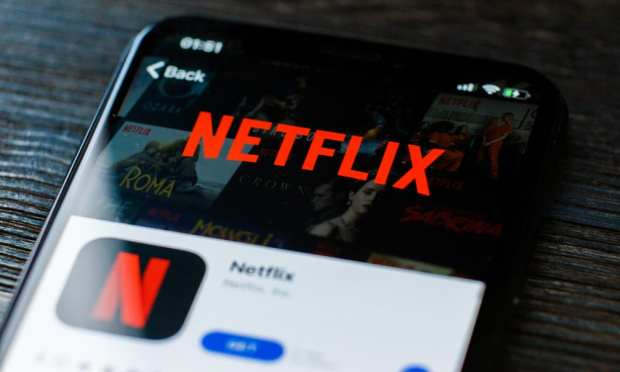Netflix Logs Huge Quarter; Stock Takes Hit

Netflix 1. Movie theaters: 0. That was the score for the second quarter as Netflix and other streaming services were the only game in town for filmed entertainment. And with a stunning 10 million new subscribers, the digital shift has been fast and powerful for the company.
“Everyone is wrestling with implications both on health, on hunger, poverty, and we too are really unsure of what the future brings,” said Netflix CEO Reed Hastings on the company’s earnings call Thursday. “It’s super hard to say if there’s strategic long term implications because we’ve just been scrambling to keep our servers running well keep the content get our post-production done. You know our small contribution in these difficult times is to make home confinement a little more bearable. And when you take that seriously, we’re working super hard on that. And you know in a couple of months we’ll all be able to grapple with the long term implications, but right now we’re just focused on getting our content out.”
The Netflix numbers were impressive, but because it could not guarantee a similar performance in Q3, the stock took a major hit in after-hours trading, dropping about 9 percent to $480 a share at 8 p.m. Thursday. In its second quarter, Netflix’s revenue grew 25 percent over the same quarter in 2019, while quarterly operating income exceeded $1 billion. Operating margin expanded an unheard of 770 basis points year over year to 22.1 percent. Content and marketing expenses were lower than expected, with the pandemic delaying some production spend.
As stated, the company added 10.1 million paid memberships versus 2.7 million in last year’s Q2. It’s a pace that cannot be kept, as Hastings pointed out in his shareholders’ letter. “The positive variance relative to our 7.5m forecast was due to better-than-forecast acquisition and retention,” he stated. “In the first half of this year, we’ve added 26 [million] paid memberships, nearly on par with the 28 [million] we achieved in all of 2019. However, as we expected … growth is slowing as consumers get through the initial shock of COVID-19 and social restrictions. Our paid net additions for the month of June also included the subscriptions we canceled for the small percentage of members who had not used the service recently.”
“For many quarters now in terms of the shift from linear to streaming on-demand entertainment is consistent, so there may be some timing impacts here, but overall, that long-term trend is really unchanged,” Hastings said on the call. “What we’re really trying to do is to make something that looks relatively easy and smooth operating, but in reality, is really hard work for a lot of folks, thousands of employees and a lot of challenges throughout our company.”
One of those challenges is following Q2 2020. As is consistent with the PYMNTS Digital 3.0 FIT framework, Hastings led with the pandemic first.
“To have a planning model, you have to have a model of COVID,” Hastings said, “and you have to know whether certain treatments are coming online, how broadly are they distributed and what are vaccines coming online, and how quickly can they be manufactured. And we don’t know any more than anybody else on those big elements. We’re in the same uncertainty that everyone else, but the thing we’re certain of is that the internet is growing. It’s a bigger part of people’s lives. Thankfully, and people want entertainment. They want to be able to escape and connect whether times are difficult or joyous.”
